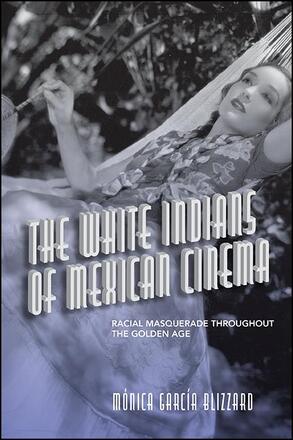
The White Indians of Mexican Cinema
Racial Masquerade throughout the Golden Age
Alternative formats available from:
Open access edition available from:
Examines the filmic representation of Whiteness as Indigeneity and its role in mediating racial politics in Mexico.
Description
The White Indians of Mexican Cinema theorizes the development of a unique form of racial masquerade—the representation of Whiteness as Indigeneity—during the Golden Age of Mexican cinema, from the 1930s to the 1950s. Adopting a broad decolonial perspective while remaining grounded in the history of local racial categories, Mónica García Blizzard argues that this trope works to reconcile two divergent discourses about race in postrevolutionary Mexico: the government-sponsored celebration of Indigeneity and mestizaje (or the process of interracial and intercultural mixing), on the one hand, and the idealization of Whiteness, on the other. Close readings of twenty films and primary source material illustrate how Mexican cinema has mediated race, especially in relation to gender, in ways that project national specificity, but also reproduce racist tendencies with respect to beauty, desire, and protagonism that survive to this day. This sweeping survey illuminates how Golden Age films produced diverse, even contradictory messages about the place of Indigeneity in the national culture.
This book is freely available in an open access edition thanks to TOME (Toward an Open Monograph Ecosystem)—a collaboration of the Association of American Universities, the Association of University Presses, and the Association of Research Libraries—and the generous support of Emory University and the Andrew W. Mellon Foundation. Learn more at the TOME website, available at: https://www.openmonographs.org/. It can also be found in the SUNY Open Access Repository at http://hdl.handle.net/20.500.12648/7153
Mónica García Blizzard is Assistant Professor of Spanish and Portuguese at Emory University.
Reviews
"The White Indians of Mexican Cinema offers a compelling, original intervention that rightly foregrounds the visual construction of race as a key lens through which to understand Mexican cinema. García Blizzard's clear, crisp prose makes this text accessible to a range of readers, from students to seasoned experts. This book will be of broad interest to scholars of race, cinema and Mexican studies." — Bulletin of Spanish Visual Studies
"Mónica García Blizzard's first book is a rich and revelatory project … This text is useful for Latin American and Anglophone scholars who work at the intersection of race, ethnicity, gender, and film studies, as the book offers a significant sociohistorical contextualization of the racialized and gendered patterns of colonial power in Mexican cinema." — Film Quarterly
"Well written, tightly argued, and thoroughly researched, The White Indians of Mexican Cinema promises to make a lively and important contribution to studies of Indigenous representation in Mexican cinema." — Dolores Tierney, author of New Transnationalisms in Contemporary Latin American Cinemas